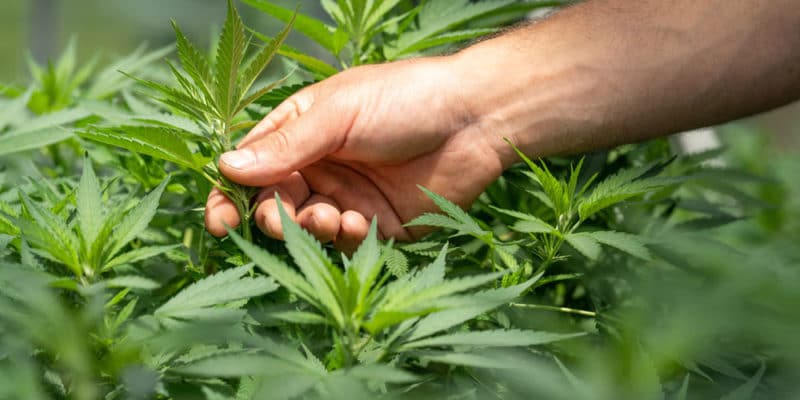VPD Cannabis Cultivation: Understanding Vapor Pressure Deficit
March 11, 2021 / 9 mins read

Vapor pressure deficit (VPD) refers to the difference between moisture that is found in the air and how much moisture the air can hold in total. VPD design and HVAC plays a vital role in cannabis cultivation because it impacts how plants grow and thrive.
VPD cannabis cultivation involves the transpiration of moisture that is created by plants. Since cannabis is a naturally occurring plant, you can track the process of transpiration and monitor VPD to successfully grow and cultivate it.
What is Transpiration Rate?
The transpiration rate in a plant is the process in which it loses moisture in the form of water vapors. The transpiration rate is necessary for growth and life in a plant, as it allows a plant to access carbon dioxide. Carbon dioxide is a critical component of photosynthesis.
A growing cannabis plant emits somewhere between 95-99% of the water that it takes in during its transpiration process. When this happens, the moisture extends back into the room where the plant is growing.
Because of the high transpiration rate in cannabis, it’s critical to monitor the VPD on a regular basis. Too much moisture trapped in a grow room can result in high humidity levels, which cause mold and mildew growth. This can also lead to unnecessarily high HVAC costs with a poorly designed system, due to higher energy required to heat humid air.
Understanding VPD Cannabis Chart
The VPD cannabis chart can help any cultivator excel at growing cannabis. The chart centers around three parameters: temperature, relative humidity, and VPD. With proper levels of each, you can maximize your plant’s growth.
Temperature is important, because your temperature will impact how much water the atmosphere in the room can hold. Likewise, your relative humidity will determine the amount of water vapor contained in the air. Knowing the VPD range you are targeting will give you flexibility to achieve that at different combinations of temperatures and humidities to maximize energy savings for your operation.

The chart above helps growers determine a positive relationship between temperature and relative moisture, which will lead to the ideal VPD parameters during the growth stage.
To maximize your growth of cannabis plants, you want your VPD to fall within the specified ranges at each phase of the plant lifecycle. Within these ranges, highlighted on the chart in green and yellow, your plants should be able to develop normally, and thus they will grow.
At the propagation phase, the plant remains sensitive to any stresses, and thus VPD should remain on the lower end of the spectrum. As the plant grows, the VPD ranges can increase as well, culminating in recommended ranges of 0.96 to 1.15 k/Pa during flowering. Some growers prefer to enter the plants into even higher VPD ranges at this stage, to stress the plant before harvest.
The white areas on the either side of the chart denote a negative relationship between temperature and relative moisture. On the white areas on the left side, VPD is too low, prohibiting the plant from releasing enough water into the atmosphere. This will impact its ability to photosynthesize properly.
On the white areas on the right side, VPD is too high, leaving the plant to transpire more quickly than it can replace the water, leading to wilting and tissue damage.
Calculating VPD Cannabis Cultivation
Calculating VPD for cannabis cultivation is pretty simple. The only information you need to get your hands on is the temperature and relative humidity inside a grow room, along with the saturated vapor pressure values for the climate. You can find a helpful chart for the latter component here.
Use this formula to calculate your VPD:
VPD = ((100-RH/100) x SVP
The results will be measured in Pascals, which you can then convert into Hectopascals by dividing by 100. When you get your final answer, you can find it on the chart we talked about above to see if you fall in the acceptable range for optimal cannabis growth.
Benefits of VPD
Should you be concerned about your VPD levels for growth? The following benefits can help you understand what positive impacts a good VPD can have on your crop.
Stomata
When any plant grows, the transpiration rate occurs through the stomata, which are cells located on the surface of leaves. As it grows, a plant will release water vapor through its stomata, ultimately increasing humidity in the room.
When you have an optimal VPD, your cannabis plant opens its stomata more. Therefore, there is more water vapor in the room. More water vapor means increased transpiration.
Faster Transpiration
Due to the openness of the plant’s stomata, faster transpiration occurs during growth. An increase in transpiration leads to an increase in photosynthesis activity. Since photosynthesis is the process during which plants grow, more rapid transpiration is a good thing.
Increase in Nutrient Intake
Controlling and monitoring your VPD allows you to also manage a plant’s water and nutrient intake. Leveling an optimal VPD will let cannabis transpire water more quickly, which enables it to pull in more nutrients. Overall, that’s good for your plant’s growth and development.
Reduce CO2 Uptake
In order to execute a productive photosynthesis process, cannabis plants need to absorb enough CO2. The smaller the stomata get, the less CO2 your plant can absorb.
When you have proper VPD levels, the stomata can open wider and therefore take in more CO2. Basically, you can control your CO2 uptake.
Equipment to Control Temperature & Humidity in Indoor Grow Rooms
Selecting high-quality equipment can help you better control the temperature and humidity within your indoor grow rooms, subsequently yielding better results.
HVAC System
A sound HVAC system will help you control the temperature and humidity of your grow room, which we already discussed are critical components to achieving your optimal VPD. Given the energy costs associated with indoor grow environments, proper HVAC design will not only give you the control of your grow environment, but can do so with significant energy savings over standard mechanical designs.
Grow Lights
Efficient LED grow lights are some of the essential tools you can have in your indoor grow room. These lights will ensure that your plants get the food source they need. A minimum range of 32 watts per plant is recommended. While some growers prefer to use High Pressure Sodium lights out of familiarity, LED lights have evolved considerably, and offer significant energy savings over their life-cycle, compared to the initial higher investment.
Air Extractor Fans
Air extractor fans are excellent equipment used to pull hot air out of your grow room, replacing it with fresh, cool air. These fans regulate airflow and are best placed towards the top of the room where the hot air will rise to.
Conclusion
Mintropy is dedicated to understanding the processes and engineering that go into cannabis cultivation. We offer cultivation facility design services to enhance plant growth through technological advances and attention to detail. Check us out and get a quote today!
Need help with your project? Let’s get in touch!
Lorem ipsum dolor sit amet, consectetuer adipiscing elit.


